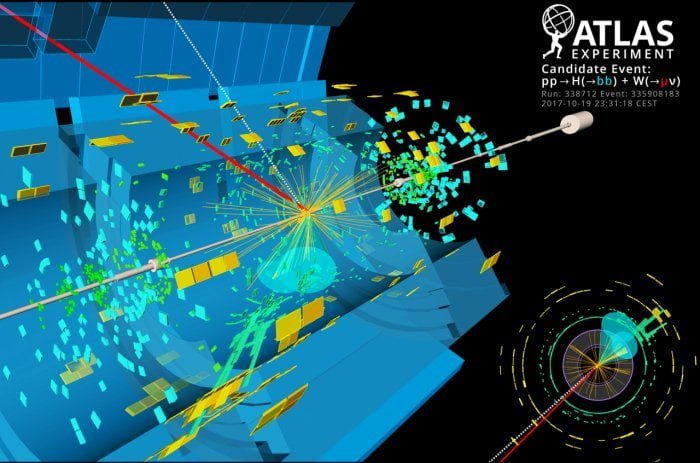After being discovered six years ago, researchers have finally been able to watch the Higgs boson decay to its fundamental particles, also known as bottom quarks. The observation and discovery are consistent with the long-predicted hypothesis about the decay of Higgs boson and mass of the bottom quark.
The findings were officially presented at the CERN1 by Atlas and CMS collaborations at the Large Hadron Collider (LHC) yesterday.
The Standard Model of particle physics says that about 60% of the time, Higgs boson will decay to as low as a pair of bottom quarks, which is the second heaviest of the six kinds of quarks. With these observations scientists can observe whether the result will be consistent with the Standard Model, or point to an entirely new physics.
The team of scientists collected data from the Large Hadron Collider which caught the Higgs boson decay to a bottom quark and the antimatter counterpart antibottom quark. Still, their work is nowhere easy to accomplish, because the decaying process is extremely challenging to catch in action.
The Higgs boson is created when there is a collision between two protons. The two gluons inside the protons need to fuse in order to produce two top quarks. The two particles recombine into the Higgs boson. The particle exists for only about one-septillionth of a second, before it further decays into the particles with less mass. The particles decay through several ways, including a fermion-antifermion pair, a pair of photons, or a pair of gauge bosons, particles that are relatively easy to watch.
Bottom quarks, are however, trickier. Every proton-proton collision results in a lot of subatomic particles, including the aforementioned particles. That said, they decay quite fast into the other particles, and scientists can have difficulties catching the process.
In order to successfully catch the decay, ATLAS and CMS used data from the first and second runs conducted at the Large Hadron Collider and tried to find bottom quarks from the particle showers they produced by colliding protons. Afterwards, they tracked the bottom quarks to recombine them back into a Higgs boson.
“Finding just one event that looks like two bottom quarks originating from a Higgs boson is not enough,” Chris Palmer, a physicist at Princeton University who worked on the CMS analysis said in a statement.
“We needed to analyse hundred of thousands of events before we could illuminate this process, which is happening on top of a mountain of similar-looking background events.”
Nevertheless, there are a couple of particles that can be identified by-products of the Higgs boson production.
“We used these particles to tag potential Higgs events and separate them out from everything else,” Palmer explained. “So we really got a two-for-one deal with this analysis because not only did we find the Higgs decaying to bottom quarks, but we also learned a lot about its production mechanisms.”
The two collaborations submitted their papers for publication to their respective scientific journals. The CMS research is available on arXiv here while the ATLAS research can be found here.
The next step of both collaborations is to adjust the measurements so that they can study the Higgs boson decay in a higher resolution.





